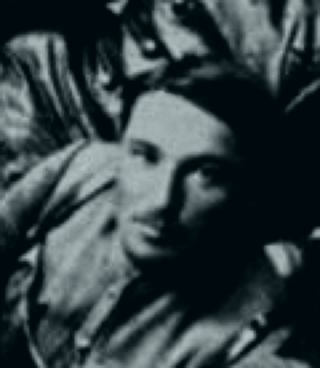
The Revolutionary Insurgent Army of Ukraine, also known as Makhnovtsi, named after their leader Nestor Makhno, was an anarchist army formed largely of Ukrainian peasants and workers during the Russian Civil War of 1917–1922. They protected the operation of "free soviets" and libertarian communes by the Makhnovshchina, an attempt to form a stateless anarcho-communist society from 1918 to 1921 during the Ukrainian War of Independence.

The battle for Donbas was a military campaign of the Russian Civil War that lasted from January to May 1919, in which White forces repulsed attacks of the Red Army on the Don Host Oblast and occupied the Donbas region after heavy fighting.

The Northern Taurida operation was a military campaign of the Russian Civil War between the Red Army and the Wrangel Russian Army for the possession of Northern Taurida. The campaign can be divided into 3 stages: the White offensive, trench warfare around the Kakhovka Bridgehead and the counterattack of the Red Army.
The Battle of Perehonivka or Battle of Peregonovka was a September 1919 military conflict in which the Revolutionary Insurgent Army of Ukraine defeated the Volunteer Army. After retreating west across Ukraine for four months and 600 kilometers, the Insurgent Army turned east and surprised the Volunteer Army. The Insurgent Army reclaimed its capital of Huliaipole within ten days.

Panteleimon "Panteley" Fyodorovich Belochub, , was a Ukrainian soldier best known as one of the commanders of the Revolutionary Insurgent Army of Ukraine, a major belligerent force during the Russian Civil Wars of 1917 – 1921.

The 1st Donetsk Corps was a military formation of the Revolutionary Insurgent Army of Ukraine, it was created on 1 September 1919 and existed until 1920.
The 6th Kyiv Corps was a military formation of the Revolutionary Insurgent Army of Ukraine, one of 4 corps which was created in October 1919 and existed until 1920.
The 9th Greek Regiment was a regiment that was part of the 3rd Infantry Brigade of the 1st Zadneprovskaya Ukrainian Soviet Division, formed on the basis of the Greek detachments of the Revolutionary Insurgent Army of Ukraine in February 1919.

The Air Fleet of the Revolutionary Insurgent Army of Ukraine was one of the branches of the Revolutionary Insurgent Armed Forces.

The 1st Zadneprovskaya Ukrainian Soviet Division was a military unit of the Ukrainian Soviet Army during the Russian Civil War.
Tymofiy Lashkevych was a Ukrainian anarcho-communist that fought with the Makhnovists during the Ukrainian War of Independence as commander of the 1st Donetsk Corps.
Oleksandr Kalashnykov was a Ukrainian anarchist and a commander of the 1st Donetsk Corps of the Revolutionary Insurgent Army of Ukraine.
Mikhail Uralov was a Russian anarchist, the head of the "Black Guard" combat units of the Moscow Federation of Anarchists ,and a commander of the Revolutionary Insurgent Army of Ukraine.
Yakov "Golden Tooth" Maskalevsky was a Ukrainian rebel ataman and a member of the Makhnovist movement.
The Azov-Black Sea Flotilla was a formation of the Makhnovist fleet, the main area of which was the Sea of Azov.
Oleksiy Vasylovych Chubenko was a diplomat for the Revolutionary Insurgent Army of Ukraine.
Ivan Chuchko (1889–1919) was a military commander in the Revolutionary Insurgent Army of Ukraine.

Hryhory Vasylivsky was a commander in the Revolutionary Insurgent Army of Ukraine, often serving as Nestor Makhno's aide-de-camp and as the army's chief of staff.

Vasyl Kurylenko was a commander in the Revolutionary Insurgent Army of Ukraine.
Luka Nykyforovych Bondarets was the cavalry commander of the Revolutionary Insurgent Army of Ukraine (RIAU).








